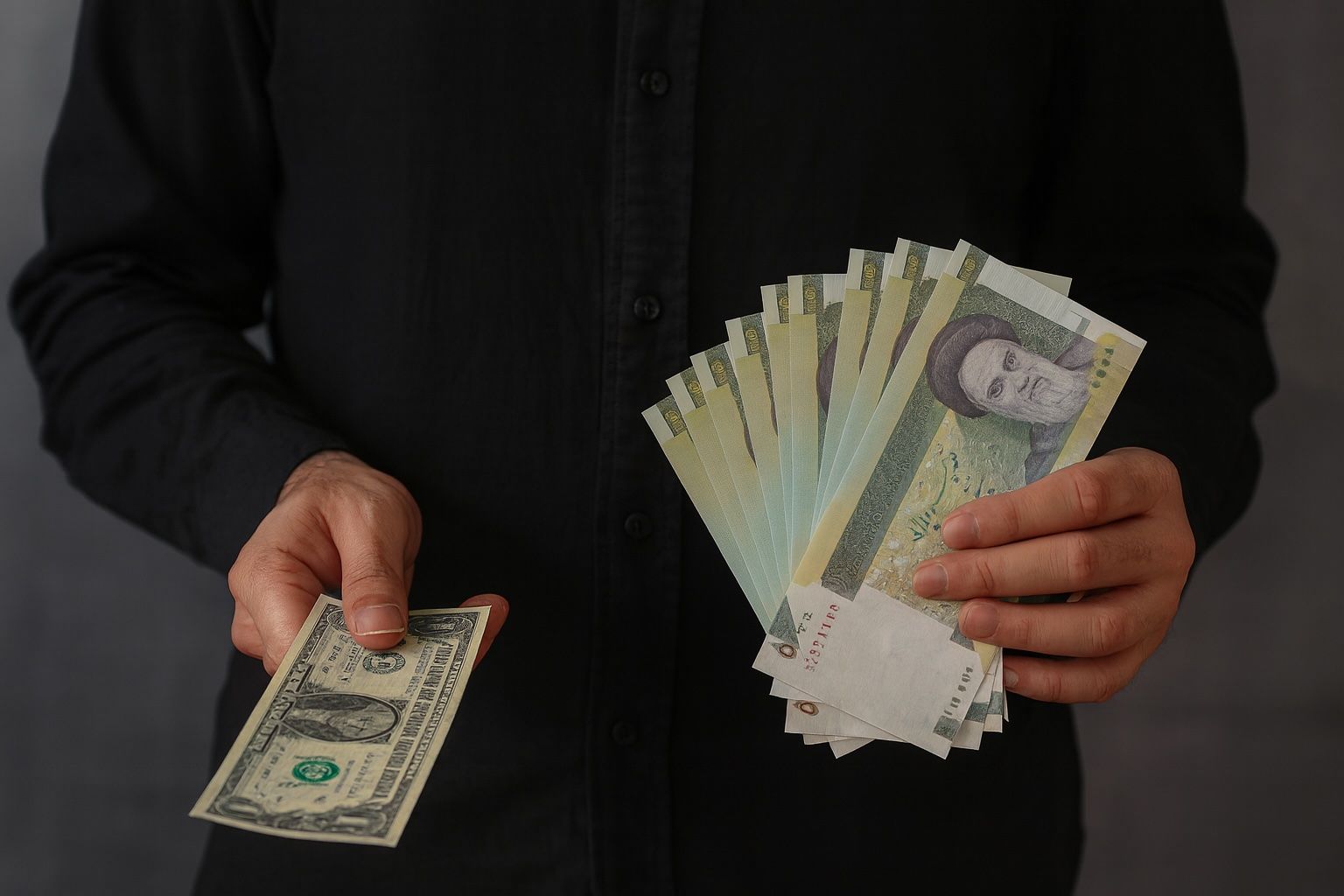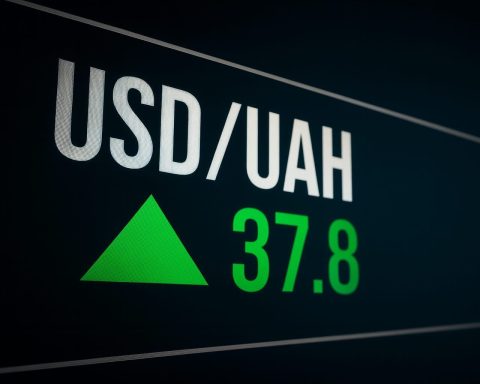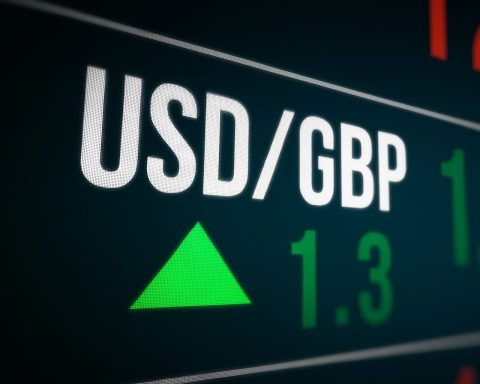- Record exchange rates: On Sep 25–27, 2025 the USD/IRR official (Central Bank) rate was roughly 561,700–582,600 rials per $1 [1] [2]. In stark contrast, Tehran’s black-market price rocketed, briefly hitting a historic ~1,085,000 rials per $1 on Sept 26 [3] (about 108,550 tomans [4]). Market trackers (Bonbast, alanchand) confirm a ~2.4% daily jump on Sep 27 (to ~1.11 million IRR) [5] [6].
- Sanctions snapback: The end of a UN “snapback” waivers on Sept 27 triggered fears of reinstated nuclear sanctions. Observers note the rial’s slide reflected “anticipation about imminent snapback sanctions” [7] [8]. The UN’s reactivation of sanctions (late Sept) will throttle Iran’s oil revenue and financial flows, tightening hard currency supply.
- Political tensions: Domestically, Iran’s leadership remains divided. Supreme Leader Khamenei publicly ruled out U.S. talks [9], even as President Pezeshkian lobbied at the UN. In March 2025, Parliament ousted the economy minister amid public anger over inflation and the falling rial [10] [11] – at the time, citing an exchange rate near 950,000 IRR/$1 on the street [12].
- Inflation and economic strain: Inflation runs around 35–40% in Iran [13]. The rial has lost roughly half its value since early 2024 [14] [15]. Sharp food and fuel price hikes, and broad “public discontent” over living costs, are widely reported [16]. The government is scrambling – from import bans to pumping dollars – to stem the collapse.
- Global USD context: Internationally, the U.S. dollar was broadly strong in late Sept as solid U.S. economic data pushed back Fed rate-cut expectations [17]. Analysts observed that unexpectedly robust consumer spending and jobless claims data “has taken the steam out of pricing for Fed rate cuts and pushed the dollar higher” [18]. Simultaneously, Middle East conflicts kept the dollar’s safe-haven bid alive. As Monex’s Juan Perez noted, in periods of regional escalation “the U.S. dollar and gold jump into safe-haven assets” [19].
- Digital currency and reforms: Tehran is betting on financial reforms. A government plan to cut four zeros off the rial (10,000:1 redenomination) was approved by Cabinet and Parliament’s economic commission in July [20]. Central Bank Governor Farzin confirmed the zero-cut plan will proceed this year [21]. Iran is also rolling out a “digital rial” CBDC: a pilot was launched on Kish Island in 2024, and Farzin has pledged a retail CBDC “in the near future” [22] [23], aiming to modernize banking and bypass sanctions.
Official vs. Black-Market Rates in Iran
Iran’s currency regime is highly tiered. State-backed exchange systems (for imports of essentials) quoted about 561,700 rials per $1 on Sept 27 [24]. In currency shops (the SANA system) and the NIMA forex platform, $1 was around 692,500–719,800 rials during Sep 25–27 [25] [26]. By contrast, the free (open) market rate was vastly weaker – ~1,050,000–1,085,000 rials per $1. Bonbast and alanchand trackers showed prices spiking to ~1,085,500 IRR (108,550 tomans) on Sept 26 [27] [28] and holding above 1.08 million on Sept 27 [29] [30]. In short, Iranians needed roughly twice as many rials to buy a dollar on the street as official quotes implied.
Sanctions Snapback and Political Tensions
Late September 2025 was dominated by Iran’s impending return of nuclear-related sanctions. The UN’s re-activation of “snapback” sanctions took effect Sep 27 [31]. Local news noted the rial’s slide on Sep 24–26 “reflecting Iranian anticipation about imminent snapback sanctions” [32]. In Tehran, officials warned that renewed barriers on oil exports, banking, and shipping would choke off foreign inflows. At the same time, high-level politics rattled markets: Supreme Leader Ali Khamenei twice rejected direct talks with Washington [33], while the government publicly insisted it sought sanctions relief. The mixed signals bred uncertainty, amplifying dollar demand in Iran. Domestic politics added fuel: back in March 2025, hardline parliamentarians blamed the economy minister for the currency rout and forced Abdolnaser Hemmati from office [34] [35]. (Parliament pointed out the rial had already plunged from ~600k in mid-2024 to around 950k by early 2025 [36].)
Global Dollar Trends and Safe-Haven Flows
Globally, the dollar was broadly firm in late September. U.S. economic data (especially stronger-than-expected consumer spending and durable goods) suggested rate cuts may be delayed [37]. BNY Paribas strategist John Velis noted that robust data “has taken the steam out of pricing for Fed rate cuts and pushed the dollar higher” [38]. Meanwhile, investors were jittery over Middle East tensions (Gaza war spillovers, ISIS-K actions, etc). In past Iran-related conflicts, market pros observe, the dollar typically strengthens as a safe asset. As Monex’s Juan Perez commented during a June crisis, when armed conflict threatens, “the U.S. dollar and gold jump into safe-haven assets” [39]. In mid/late Sept, an escalation-triggered knee-jerk in oil and gold may have also indirectly pressured the rial by boosting dollar demand.
Public Sentiment and Social Rumors
On the streets and social media of Tehran, anxiety was high. With inflation near 40%, many Iranians have scrambled to protect savings. Bloomberg (via AP) and local outlets reported outraged voters and traders, with some resorting to crypto or gold. Indeed, the central bank recently banned rial purchases of cryptocurrencies, citing a desire to halt the rial’s slide [40]. Al Jazeera notes that Iran’s crash prompted a crackdown: authorities declared CBI sole manager of crypto and even detained illegal currency traders [41]. Privately, rumors circulated of looming currency controls or redenomination; indeed, MP statements confirm an official push to drop four zeros to “preserve the currency’s dignity” [42]. Gold soared alongside the dollar: Tehran dealers reported fresh highs for gold coins (over 108 million rials for a Bahar Azadi coin by Sept 24), as Iranians sought hard-asset hedges [43] [44].
Neighboring Currencies and Regional Context
By late September, Iran’s neighbors painted a different picture. Gulf states like the UAE and Oman, with currencies pegged to the dollar, saw no comparable volatility. Iraq’s dinar (pegged to $) and Afghanistan’s afghani were relatively stable. Turkey’s lira, while troubled earlier, had stabilized on policy changes and was not in a freefall similar to Iran’s [45]. In short, analysts stress Iran’s exchange woes are largely homegrown (sanctions, domestic policy) rather than a regional contagion.
Expert Commentary
Financial experts underline the mix of factors: BNY Paribas strategist John Velis (Americas FX & Macro) noted U.S. data “is not a picture of an economy that’s about to weaken significantly…Everything will hinge on what the Fed does” [46] – implying the dollar will stay bid if Fed cuts are delayed. On geopolitical risk, Monex USA trader Juan Perez observed that in conflict scenarios “investors largely jump to historically the safest assets, which is the U.S. dollar” [47]. Gold-market analyst Mohammad Kashti-Aray linked Iran’s currency drop to global uncertainties, noting oil and war fears drove gold up by $76/oz in a week [48] [49].
Outlook – Digital Rial and Reforms
Looking ahead, Iran is pushing financial innovations to ease dollar dependence. A central bank digital currency (“digital rial” or CBDC) is in trials – a retail pilot ran in the Kish free-trade zone [50]. Governor Farzin has vowed a nationwide CBDC launch soon as part of a fintech modernization push [51] [52]. Politically, lawmakers and economists argue removing four zeros could simplify Iran’s currency system [53] [54]. For now, though, currency experts warn that without sanction relief or a major economic shift, the rial’s free-market slide is unlikely to reverse. As one analyst summed up, Iran’s twin problems of chronic inflation and external pressure suggest the USD demand in Tehran may remain elevated for some time [55] [56].
Sources: Official CBI rates and black-market prices (Trend News Agency [57] [58] [59]; Bonbast/alanchand data [60]), Reuters and Al Jazeera economic reports [61] [62] [63], AP/Yahoo news [64], regional analysis [65], and financial news outlets [66] [67]. These highlight Iran’s exchange rates, policy moves, and expert commentary around Sept 26–27, 2025.
References
1. www.trend.az, 2. www.trend.az, 3. www.intellinews.com, 4. www.intellinews.com, 5. www.intellinews.com, 6. www.trend.az, 7. www.criticalthreats.org, 8. www.trend.az, 9. www.aljazeera.com, 10. www.aljazeera.com, 11. www.aljazeera.com, 12. www.aljazeera.com, 13. www.aljazeera.com, 14. www.reuters.com, 15. www.aljazeera.com, 16. www.aljazeera.com, 17. www.reuters.com, 18. www.reuters.com, 19. www.reuters.com, 20. www.intellinews.com, 21. www.intellinews.com, 22. cointelegraph.com, 23. cointelegraph.com, 24. www.trend.az, 25. www.trend.az, 26. www.trend.az, 27. www.intellinews.com, 28. www.criticalthreats.org, 29. www.trend.az, 30. www.trend.az, 31. www.trend.az, 32. www.criticalthreats.org, 33. www.aljazeera.com, 34. www.aljazeera.com, 35. www.aljazeera.com, 36. www.aljazeera.com, 37. www.reuters.com, 38. www.reuters.com, 39. www.reuters.com, 40. www.aljazeera.com, 41. www.aljazeera.com, 42. www.intellinews.com, 43. www.intellinews.com, 44. www.intellinews.com, 45. www.reuters.com, 46. www.reuters.com, 47. www.reuters.com, 48. www.intellinews.com, 49. www.intellinews.com, 50. cointelegraph.com, 51. cointelegraph.com, 52. cointelegraph.com, 53. www.intellinews.com, 54. www.intellinews.com, 55. www.aljazeera.com, 56. www.intellinews.com, 57. www.trend.az, 58. www.trend.az, 59. www.trend.az, 60. www.intellinews.com, 61. www.reuters.com, 62. www.aljazeera.com, 63. www.aljazeera.com, 64. www.timesofisrael.com, 65. www.criticalthreats.org, 66. www.intellinews.com, 67. cointelegraph.com






![PACS Group (NYSE:PACS) Pops After NYSE Reprieve—Is the Nursing‑Home Giant Finally Turning the Corner? [Sep 26, 2025] PACS Group (NYSE:PACS) Pops After NYSE Reprieve—Is the Nursing‑Home Giant Finally Turning the Corner? [Sep 26, 2025]](https://ts2.tech/wp-content/uploads/2025/09/pacs-1024x683.jpg)



